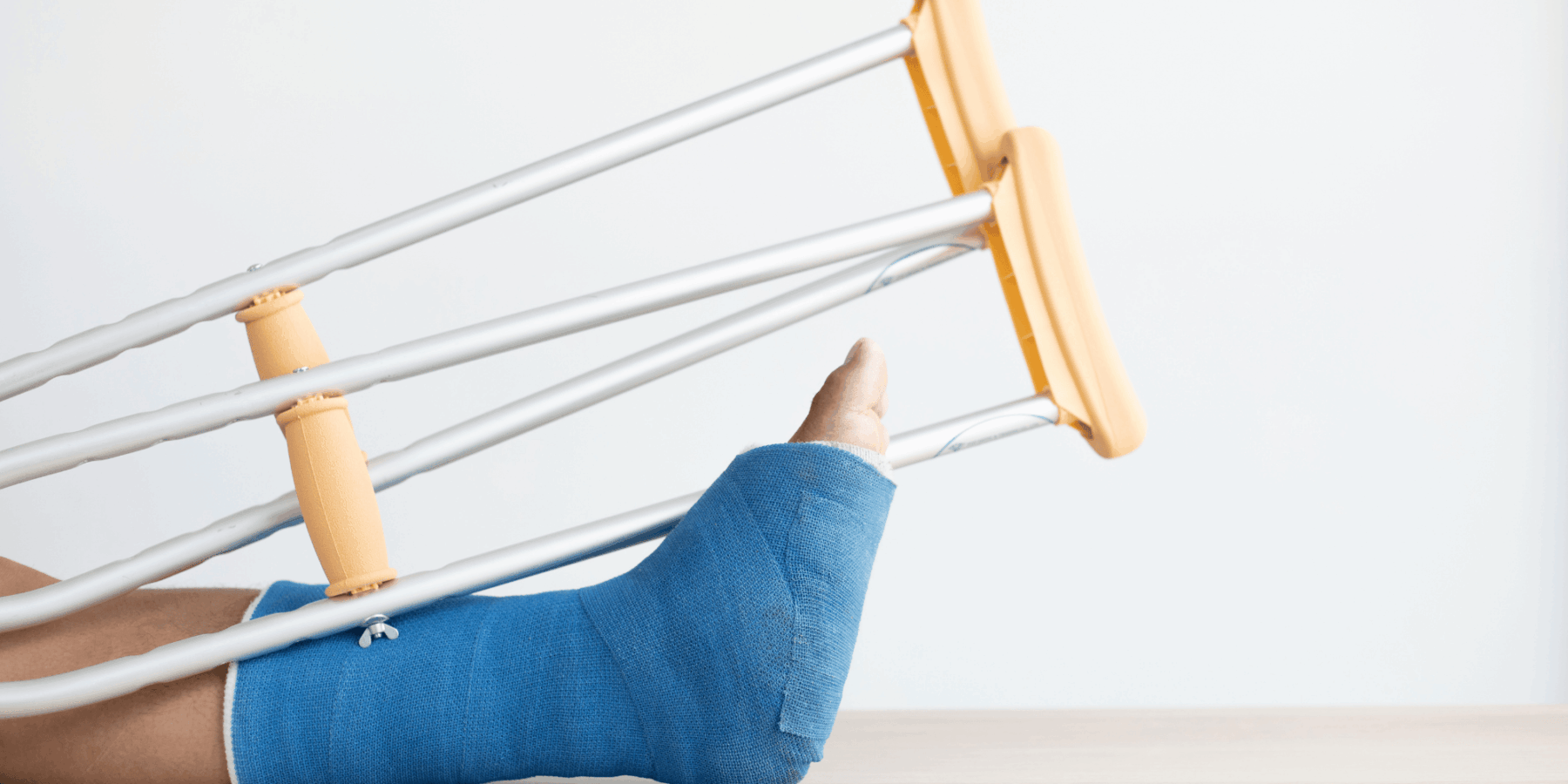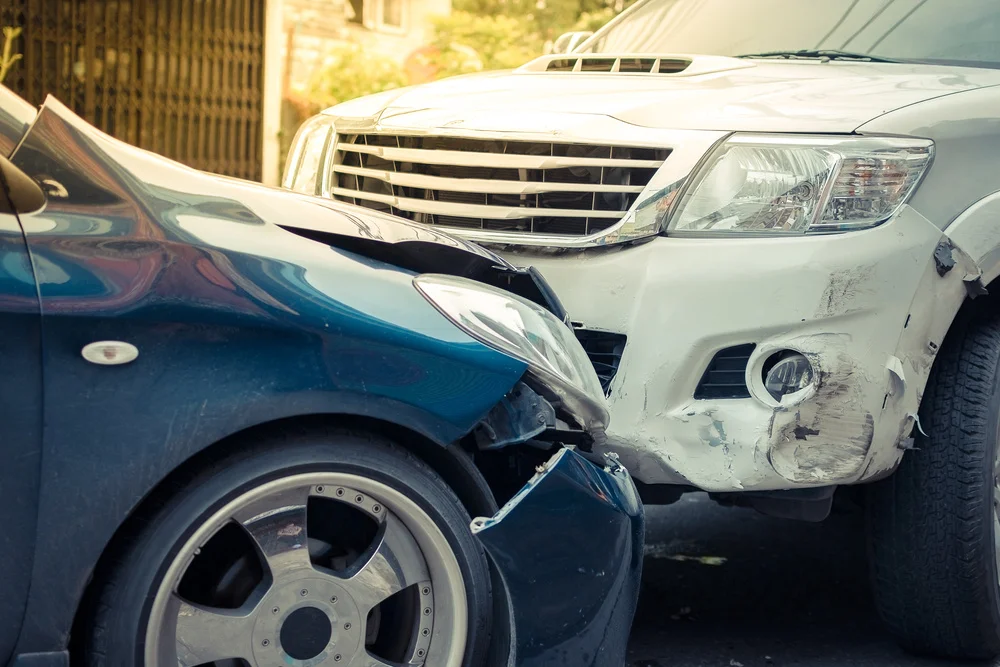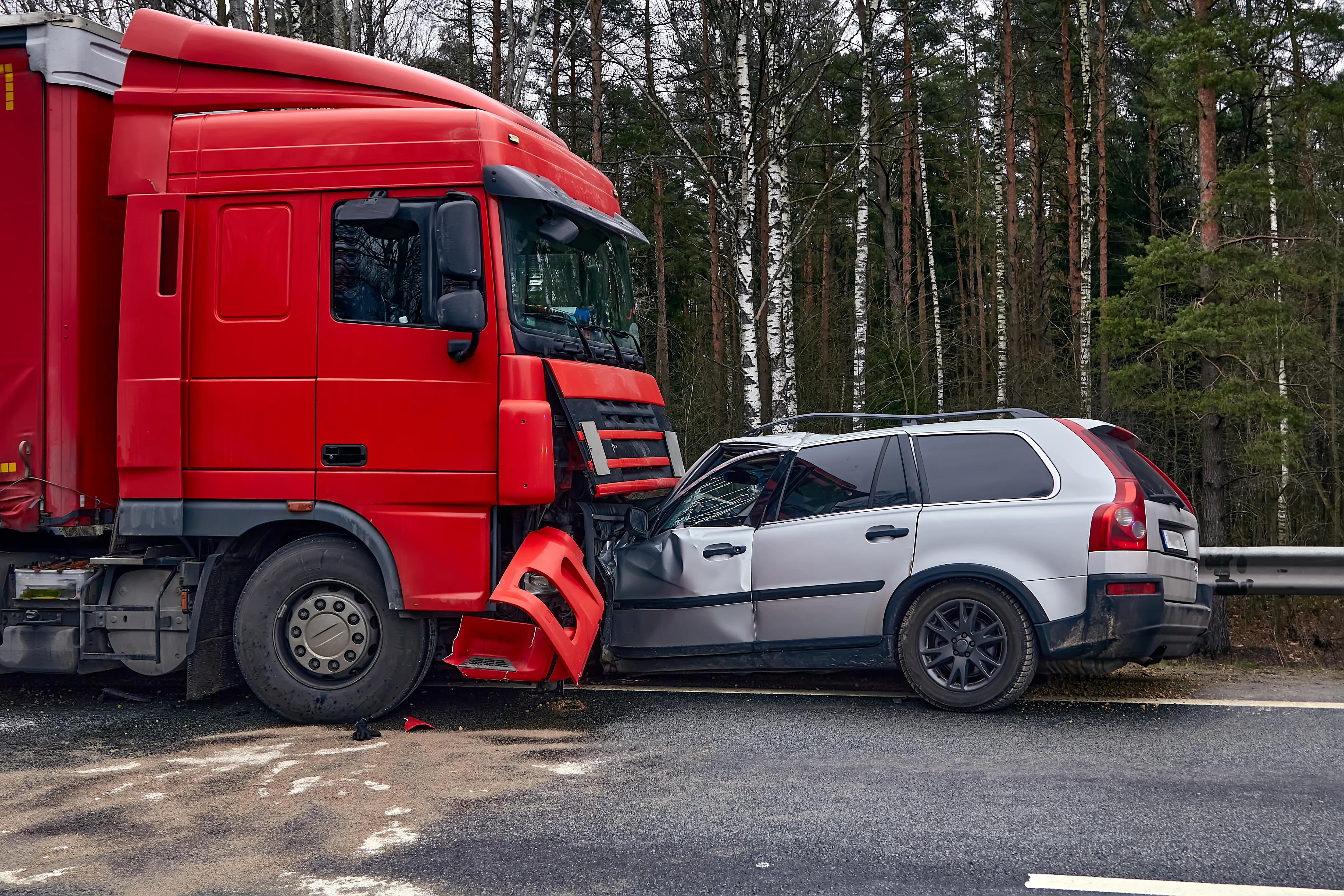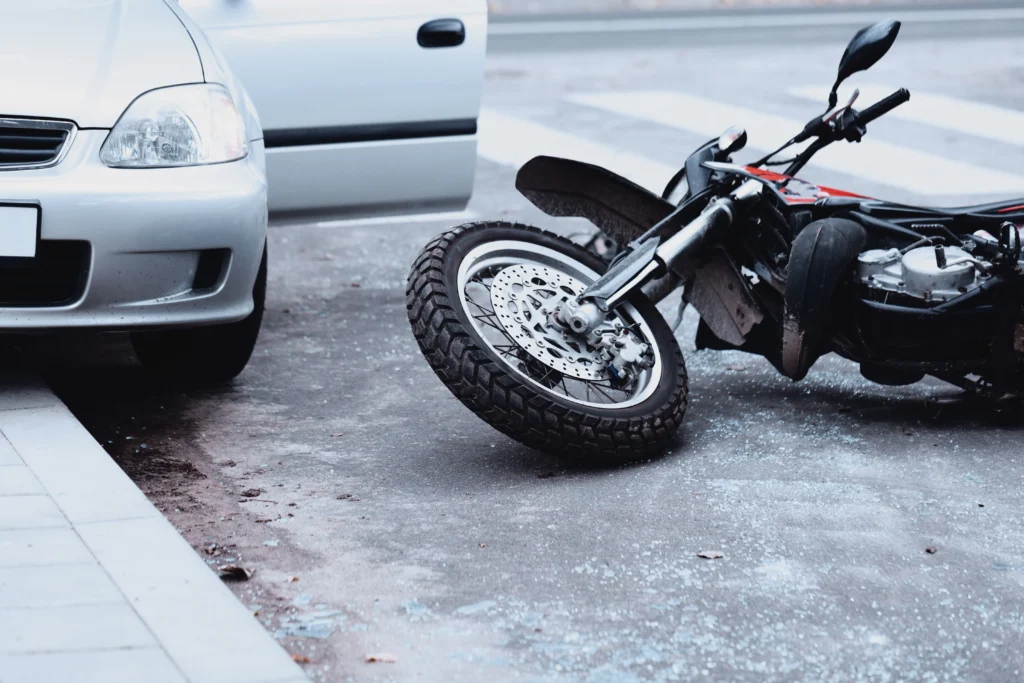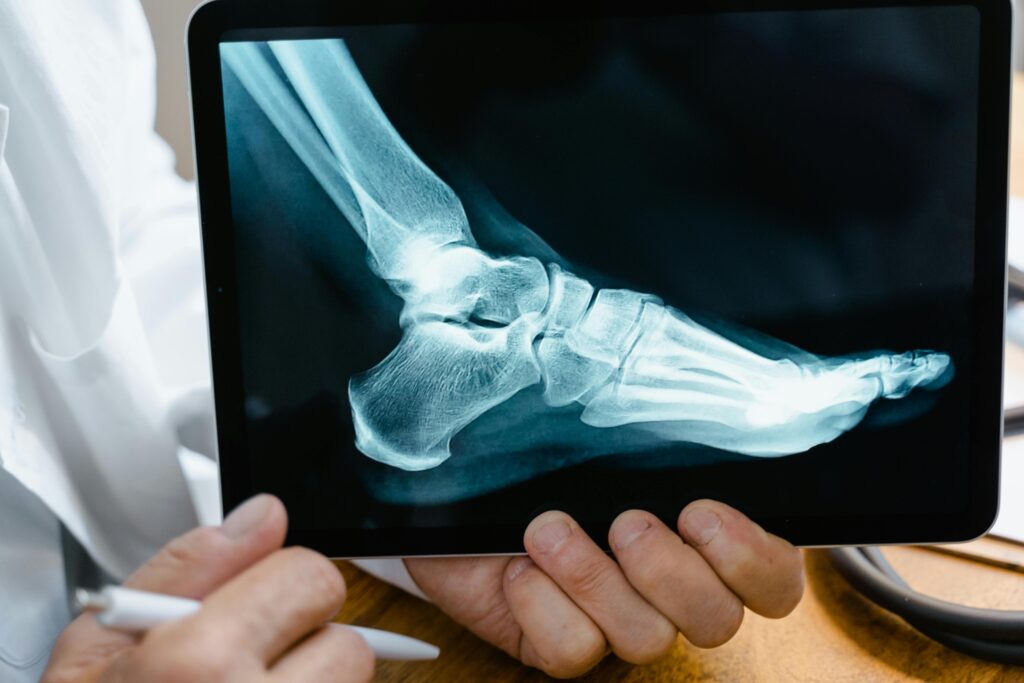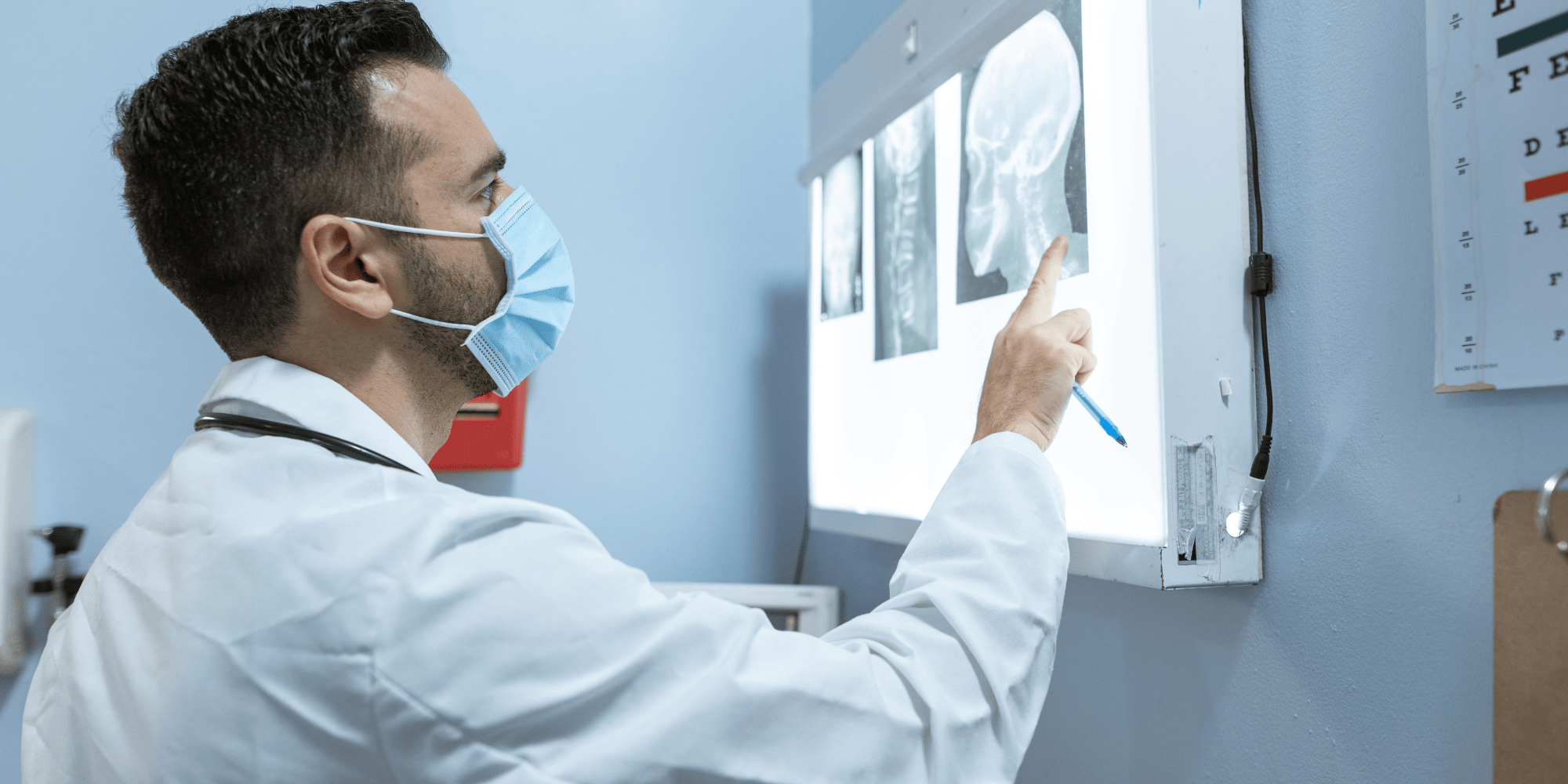Colorado Broken Bones Motorcycle Injury Lawyers Fighting for Riders
Motorcyclists on the roads of Colorado are indeed at risk each time they ride. From Red Mountain Pass high-angle curves to congested highways through Denver’s Capitol Hill, riders are at the mercy of vicious crashes that result in broken bones. These aren’t just a nuisance injuries, these injuries can sideline you from work, turn your life around, and take years of rehabilitating. When the negligence results in broken arms, legs, ribs, or hips, it is crucial to have a lawyer who is well-versed in Colorado roadways and traffic laws.
Fracture-related motorcycle crashes are not only common but also among the most severe according to NHTSA statistics. Whether the crash was on I-70 outside Vail or South Broadway in Englewood, our lawyers build tough cases for motorcyclists who sustained fractured bones and permanent damage.
Levine Law has recovered millions for Colorado accident victims. We move quickly, investigate thoroughly, and pursue maximum recovery you deserve. Let our attorneys fight in the courtroom while you heal and get back to living.
Common Ways Motorcycle Riders Suffer Broken Bones in Colorado Collisions
Motorcycle crashes throughout Colorado frequently result in catastrophic skeletal injuries. From fractured wrists to crushed hips, these injuries are among the most painful and debilitating a rider can experience. Without the protection of a vehicle frame, even a minor collision can cause a rider to be thrown, crushed, or pinned, leading to long-term damage.
The state’s rugged terrain and unpredictable traffic patterns add another layer of risk. Riders passing through Glenwood Springs, weaving through I-25 near Denver, or cruising down Highway 550 near Ouray face serious threats from both environmental conditions and negligent drivers. The following crash types often result in broken bones requiring surgeries, months of rehab, and major life adjustments.
Left Turn Collisions at Colorado Intersections
Drivers often misjudge the speed or visibility of motorcycles during left turns
Motorcycle riders traveling straight through intersections are frequently struck by oncoming vehicles making unprotected left turns. These crashes are widespread in cities like Aurora, Greeley, and Colorado Springs, especially near heavily trafficked intersections like East Colfax and Colorado Boulevard. The impact often slams the rider into the vehicle or roadway, resulting in broken femurs, pelvic fractures, or spinal injuries.
According to a recent study from the National Library of Medicine, over 42 percent of motorcycle crashes that result in hospitalization occur during left-turn incidents. Riders who suffer these fractures frequently undergo multiple surgeries, physical therapy, and long-term pain management to regain mobility and stability.
Why Urban Traffic Layouts Contribute to These Accidents
Denver and Boulder intersections often lack protected left-turn signals or adequate visibility
In dense urban areas like Denver’s Capitol Hill or Boulder’s Pearl Street corridor, many intersections are not designed with motorcycle visibility in mind. Left-turning vehicles often have limited sight lines due to parked cars or bus stops, increasing the chance of a sudden crash. Riders proceeding through green lights may have the right of way but still become victims of devastating bone injuries when a vehicle turns into their path.
These scenarios underscore the importance of securing surveillance footage, police reports, and eyewitness statements. They also show how local road design can become a factor in determining liability during a motorcycle injury claim.
Rear-End Collisions on High-Speed Colorado Highways
Motorcycles are often struck from behind by distracted or speeding drivers
Rear-end collisions are among the most common types of motorcycle crashes on major Colorado highways. Riders traveling along I-70 near Golden or I-25 near Monument are regularly struck from behind when traffic slows down suddenly or when a driver is distracted. These impacts send riders airborne or crush them between two vehicles, resulting in wrist fractures, broken ribs, or severe spinal compression.
The Colorado State Patrol regularly issues warnings about following distances and distracted driving. Despite this, crashes continue to occur due to aggressive driving, tailgating, or inattentive motorists. These rear-end accidents often leave victims with months of disability and thousands in unpaid medical bills.
The Dangers of Tailgating and Speeding in Colorado’s Congested Zones
High traffic volume near commuter cities like Thornton or Lakewood increases risk
During rush hour or weekend travel, motorcycles often get caught between fast-moving vehicles in areas with stop-and-go traffic. Tailgating drivers may not react in time when traffic slows, especially around interchanges near the Denver Tech Center or the entrance to Boulder off US-36. The physics of a rear-end crash mean the motorcycle absorbs most of the energy, often resulting in compression injuries to the spine or fractures in the upper limbs.
Many riders experience a loss of income during their recovery. These types of injuries can prevent victims from returning to physically demanding jobs or performing everyday tasks like driving or carrying groceries.
Sideswipe Collisions in Tight Traffic or Lane-Sharing Areas
Motorcyclists are often clipped by vehicles merging without checking blind spots
On roads like Speer Boulevard in Denver or Harmony Road in Fort Collins, narrow lanes and heavy traffic create prime conditions for sideswipe crashes. Drivers frequently merge into adjacent lanes without seeing a motorcycle. A single bump can cause a rider to lose balance, fall, and suffer broken elbows, collarbones, or shoulder injuries.
The National Safety Council notes that sideswipe crashes are often underreported but can cause significant injuries. These crashes commonly occur during rush hour or in shared-lane areas where motorcycles are legally permitted to pass between vehicles.
Colorado Riders Face Elevated Risks in Downtown and Suburban Areas
Lack of bike lanes and reduced visibility increase the chances of a crash
Many suburban communities and city cores do not have designated motorcycle lanes or signage that alerts drivers to two-wheeled vehicles. As a result, drivers assume the lane next to them is clear and change lanes without checking properly. Riders in Lakewood, Aurora, or Westminster report frequent close calls and actual collisions due to this exact scenario.
When sideswipe crashes cause broken bones, victims often require orthopedic surgeries and immobilization, making daily life difficult. Proving fault in these cases involves evaluating dashcam footage, witness statements, and potentially even ride-sharing GPS logs.
Hazardous Road Conditions in Colorado’s Mountain Passes
Crashes caused by road hazards often result in compound or spiral fractures
Mountain roads like Loveland Pass, Monarch Pass, and Wolf Creek Pass are scenic but treacherous. Loose gravel, eroded shoulders, fallen debris, and sudden weather shifts all increase the chances of losing control. A motorcycle crash in these areas can cause a rider to fall awkwardly or slide into a guardrail, frequently resulting in broken ankles, tibias, or wrists.
A report from the Colorado Department of Public Health and Environment states that falls and vehicle crashes on uneven or hazardous terrain lead to a high number of orthopedic injuries. Riders in mountain regions must deal with steep grades, hairpin turns, and inconsistent road maintenance, which compound the risk of serious injuries.
Motorcycle Stability is Easily Disrupted by Environmental Hazards
Weather and surface changes in mountain corridors cause sudden loss of control
Even experienced riders can be caught off guard by a wet patch in a canyon or black ice on a shaded curve. Unlike cars, motorcycles have no buffer to absorb impact or correct a skid. When tires lose traction, the rider often hits the ground hard, leading to broken bones and severe abrasions.
Because these crashes sometimes involve no other vehicles, insurance companies may attempt to deny liability or reduce payouts. Our firm counters that by collecting scene evidence, filing road maintenance record requests, and bringing in crash analysis when needed.
Understanding the Serious Impact of Bone Fractures After a Colorado Motorcycle Crash
Broken bones from Colorado motorcycle accidents are not minor injuries. They cause long-lasting pain, mobility loss, and months of rehabilitation. In many cases, they also bring financial devastation when riders cannot work or care for themselves. These injuries happen fast, but the consequences can linger for a lifetime if not properly treated and documented.
Motorcycle crashes involving skeletal injuries often require surgery, physical therapy, and long-term care. The American Academy of Orthopaedic Surgeons confirms that motorcycle-related fractures commonly include the tibia, femur, pelvis, humerus, and clavicle. These bones are essential for movement and stability, and their recovery can take several months or more.
Fractured Legs and Hips Often Require Surgery and Extended Recovery
Motorcyclists frequently suffer broken femurs, tibias, and hips in crashes across Colorado
When a motorcycle collides with a car or hits the ground, the rider’s legs often absorb the impact. High-speed wrecks on Highway 285 or accidents on Wadsworth Boulevard in Lakewood frequently lead to lower extremity injuries. Riders with fractured legs or hips often undergo open reduction and internal fixation, followed by a prolonged recovery period.
According to research from the National Center for Biotechnology Information, femur and hip fractures carry a high risk of complications, especially for older riders. Limited mobility, chronic pain, and dependence on mobility aids are common outcomes. These injuries dramatically reduce a rider’s quality of life and require significant financial compensation.
Why Leg Injuries Are Common in Colorado Motorcycle Crashes
Lack of external protection leaves the lower body exposed during impact
Motorcycles do not have side panels or crumple zones. When a rider goes down in a crash, their legs often become trapped under the bike or struck by another vehicle. Riders in cities like Aurora, Pueblo, and Grand Junction face this risk every time they hit the road. The road surfaces, traffic speeds, and intersection layouts in these areas contribute to frequent and severe leg injuries.
Medical providers often recommend long-term physical therapy or even joint replacement for riders with these injuries. Our firm helps ensure all future care is documented and factored into your claim.
Upper Body Fractures Cause Long-Term Loss of Strength and Function
Crashes regularly result in broken arms, wrists, collarbones, and shoulders
When riders instinctively extend their arms during a fall, the result is often fractured ulnae, radii, or clavicles. These injuries are common in both city crashes and rural highway spills. Riders who go down on Highway 24 near Woodland Park or in traffic near Denver’s Civic Center often report broken collarbones or shoulders that require months of immobilization.
The Mayo Clinic explains that shoulder and arm fractures can lead to frozen joints, limited motion, and ongoing weakness if not treated properly. These injuries often affect a person’s ability to drive, lift, and perform job-related tasks.
Colorado Riders Face High Risk for Shoulder and Arm Injuries
Impact from falls and direct strikes often leads to upper limb fractures
In many motorcycle crashes, the rider’s body strikes the ground or another vehicle shoulder-first. In locations like Fort Collins or Loveland, where road conditions shift suddenly and traffic patterns are dense, a simple evasive maneuver can end with a shattered shoulder or arm. These types of breaks interfere with work, childcare, and essential daily activities.
We work closely with orthopedic imaging centers and healthcare providers across Colorado to document range of motion, healing timelines, and functional limitations for riders with upper body fractures.
Rib and Spine Fractures Are Some of the Most Dangerous Outcomes
Injuries to the torso or spinal column carry serious risks for long-term damage
Riders who suffer high-speed crashes on mountain roads like the Million Dollar Highway near Silverton or along I-70 through Vail Pass may experience chest or back trauma. These impacts can fracture ribs, compress vertebrae, or even damage the spinal cord. The results can include chronic pain, nerve impairment, and long-term physical restrictions.
The Cleveland Clinic warns that spinal fractures require early detection and aggressive treatment to prevent permanent damage. Riders with spinal injuries often need bracing, surgical intervention, and a long rehabilitation process to regain basic mobility.
Colorado Terrain Elevates the Danger of Spine and Rib Injuries
Steep gradients and hard surfaces increase the severity of crash trauma
Mountainous terrain and elevated speed limits make Colorado motorcycle accidents particularly violent. When a crash occurs, the rider is often ejected or lands on sharp rocks, uneven asphalt, or guardrails. This creates a higher chance of vertebral fractures and internal injuries. Victims from areas like Steamboat Springs or Leadville often report severe back pain and breathing issues following crashes in these environments.
Properly diagnosing and treating these injuries requires advanced imaging, long-term medical follow-up, and legal representation that understands their full impact. Our team ensures your claim reflects all current and future medical needs.
Why Colorado Broken Bones Motorcycle Claims Require a Strategic Legal Approach
Fractured bone cases from Colorado motorcycle crashes are rarely straightforward. These injuries often involve multiple layers of medical documentation, insurance disputes, and aggressive defense tactics. Riders dealing with shattered legs, cracked ribs, or broken collarbones cannot afford to leave money on the table. That is why every claim must be built with precision, urgency, and relentless advocacy.
Unlike soft tissue injuries, bone fractures show up clearly in medical imaging, but that does not guarantee full compensation. Insurance companies still try to downplay long-term consequences, delay payments, or blame the rider. To protect your rights and financial future, your case must clearly prove fault, document damages, and forecast future medical needs. At Levine Law, we do exactly that for every injured motorcyclist we represent.
We Secure and Organize Detailed Medical Evidence Right Away
Medical imaging and surgical reports form the backbone of your claim
After a motorcycle crash in Colorado, your treatment plan may include X-rays, CT scans, surgical procedures, and extended physical therapy. Our legal team collects every piece of medical documentation from providers across the state, including hospitals in Denver, Boulder, and Colorado Springs. We ensure nothing gets overlooked, especially in cases where future care is likely.
According to the National Institutes of Health, full recovery from orthopedic trauma often takes over six months and may require assistive devices or corrective surgery. We calculate these medical costs from the beginning to give insurers a clear view of what your recovery actually involves.
Early Documentation Helps Prevent Disputes and Coverage Denials
Quick action improves your chances of a successful full-value claim
Insurance adjusters often claim there are gaps in treatment or that injuries are not as severe as reported. By securing early documentation and tracking your care consistently, we prevent these bad-faith tactics. Riders treated at facilities like UCHealth or Swedish Medical Center benefit from our strong relationships with providers who support patient recovery and legal clarity.
We also include detailed summaries of your recovery timeline, work restrictions, and projected outcomes to support your damages demand.
We Break Down the Full Financial Impact of Broken Bones
Injury claims must cover both short-term and long-term losses
Broken bones from motorcycle crashes affect more than your body. They interfere with work, home life, and daily routines. Whether you are a construction worker in Arvada or a teacher in Colorado Springs, you likely cannot return to full duty after a major fracture. Lost income, job changes, and physical limitations all add pressure to your finances.
Data from the Bureau of Labor Statistics shows that bone injuries lead to more missed workdays than nearly any other trauma. We calculate every lost paycheck, missed opportunity, and vocational consequence so your compensation reflects the reality of your injury.
We Collaborate With Professionals to Forecast Long-Term Needs
Ongoing care, therapy, and equipment must be part of your claim
In many cases, riders need follow-up surgeries, joint replacements, or home modifications to maintain a quality life. We work with financial consultants, care planners, and rehabilitation providers to estimate these long-term needs. These costs are presented clearly in our demand packages to insurers and defense attorneys, forcing them to confront the true value of your case.
Motorcycle crash victims from areas like Parker, Longmont, and Golden often face life changes that require a shift in career or lifestyle. We make sure those realities are documented and fully factored into your claim.
We Aggressively Challenge Insurance Tactics That Minimize Your Case
Insurance companies often attempt to undervalue fracture injuries
Despite clear X-rays and surgical reports, insurers frequently argue that broken bone claims are simple to treat or that recovery is guaranteed. In truth, complications such as malunion, infection, or chronic pain are common in motorcycle injury cases. We push back hard against any attempt to minimize your suffering or reduce your payout.
The Consumer Federation of America warns that many insurers use delay and deny tactics even when injuries are well-documented. We recognize these patterns and prepare every case to counteract them before they begin.
We Prepare Your Case for Trial to Maximize Negotiating Power
Serious preparation leads to better settlements and verdicts
While many cases settle out of court, our team prepares every claim as if it will be tried in front of a jury. That level of commitment shows insurers that we are serious. It also gives us leverage during settlement talks. When they realize we are ready to litigate, they come to the table with better offers.
If you suffered broken bones in a motorcycle crash in Colorado, your future depends on strong representation. Let our firm handle the legal battle while you focus on healing.
Call Our Colorado Broken Bones Motorcycle Attorneys Today for Trusted Legal Help
You should not have to carry the weight of a fractured leg, shattered collarbone, or broken ribs alone. Motorcycle accidents across Colorado, from downtown Denver to the winding roads of Durango, can leave you sidelined physically, emotionally, and financially. But you do not have to fight for justice by yourself.
At Levine Law, we understand the serious impact these injuries have on your life. We have helped countless injured riders across Colorado recover the compensation they need to rebuild. Whether your crash happened near Fort Collins, Aurora, or the Western Slope, we are ready to help right now.
Our attorneys move fast, build strong claims, and push back when insurance companies try to delay or deny what you are owed. You deserve a team that will pursue the maximum settlement available under Colorado law.
Call us today at 303-835-4910 for a free consultation or visit carcrashlawyercolorado.com to get started. You pay nothing unless we win your case. Let us help you get back on the road to recovery.
Practice Areas
Trust Levine LawWith Your Personal Injury Claim
If you or a loved one have been injured, Levine Law will fight for you every step of the way. We will give our all to secure the compensation you rightfully deserve.
Contact usfor a free consultation.
Phone: (303) 951-4810
